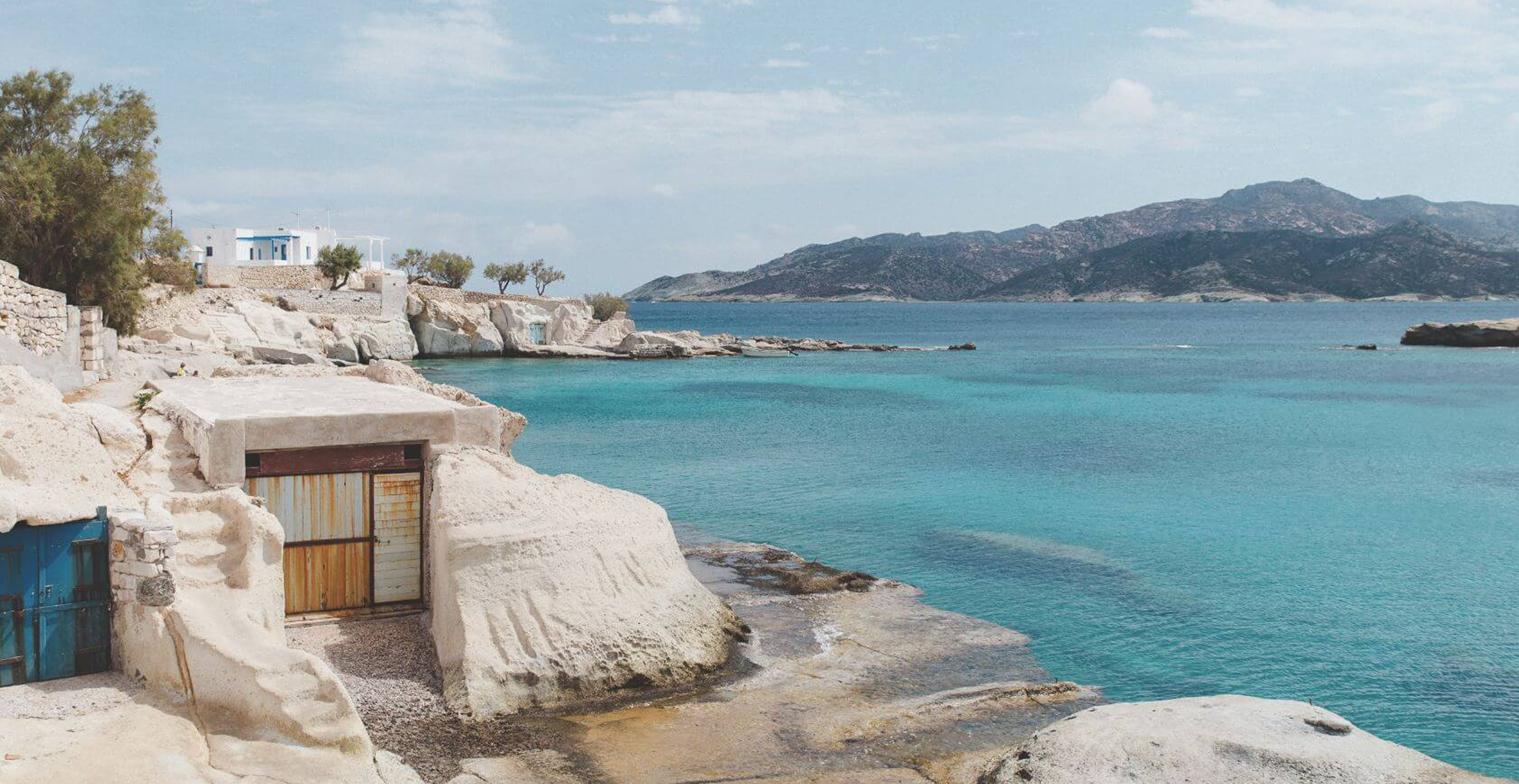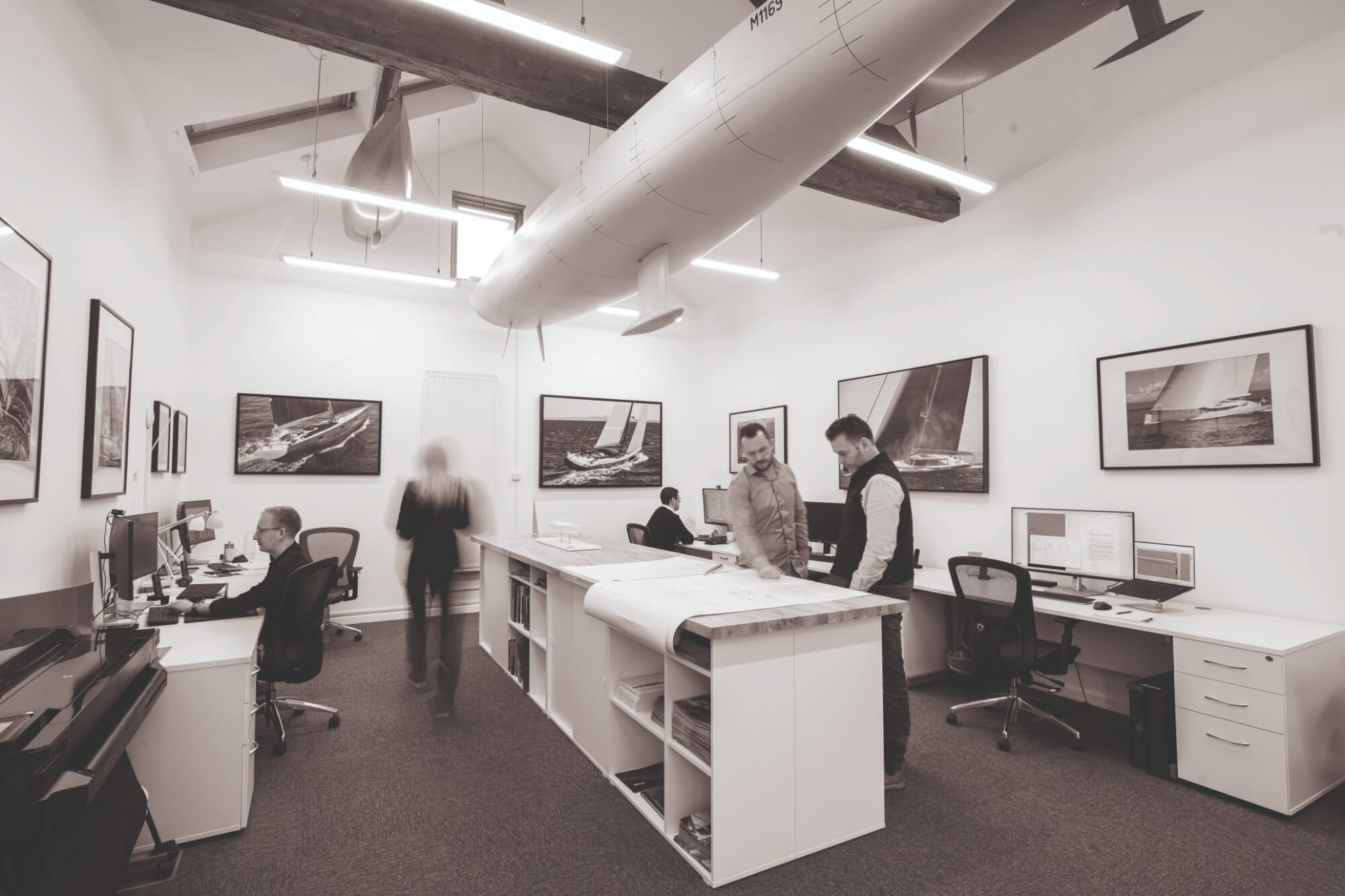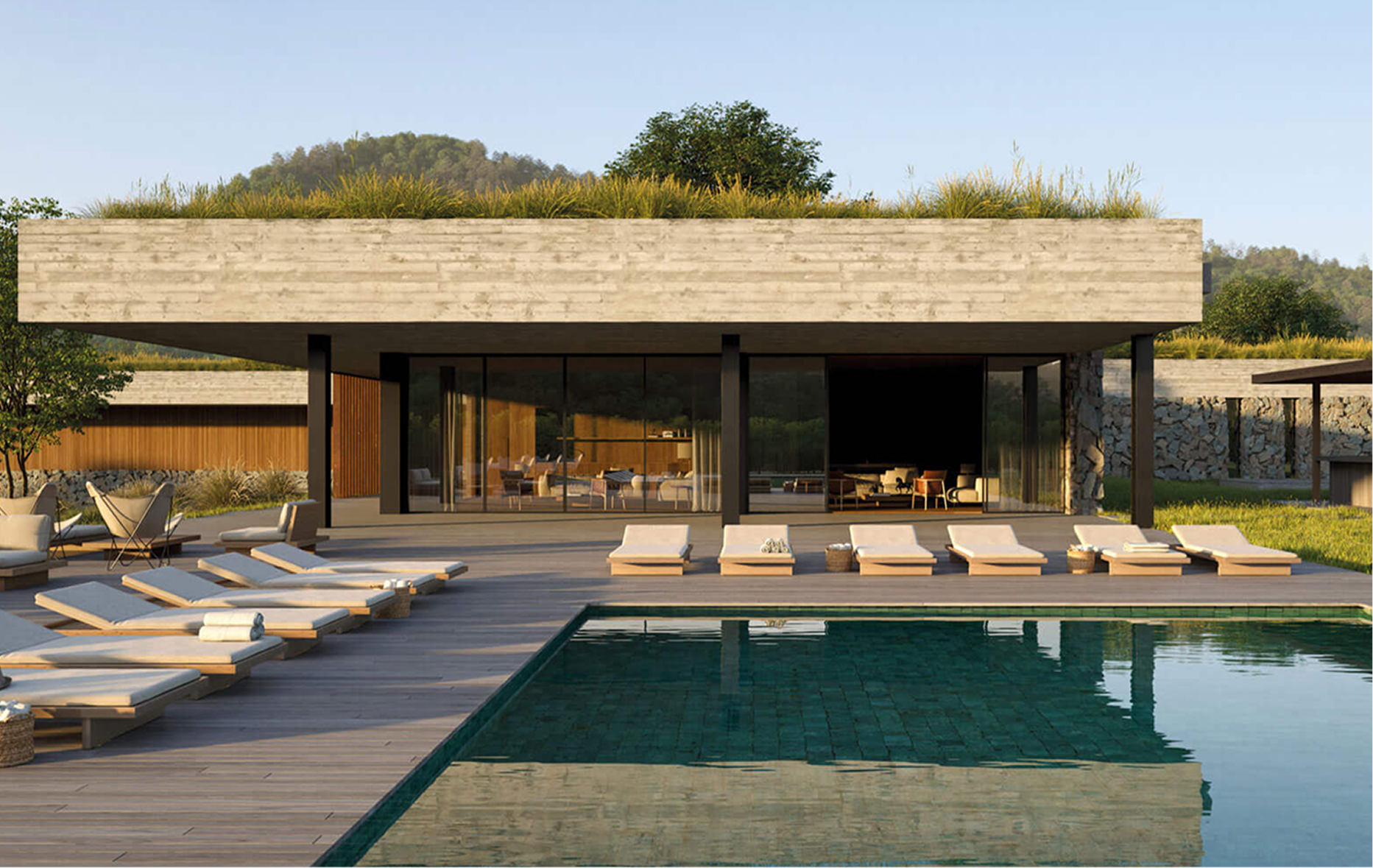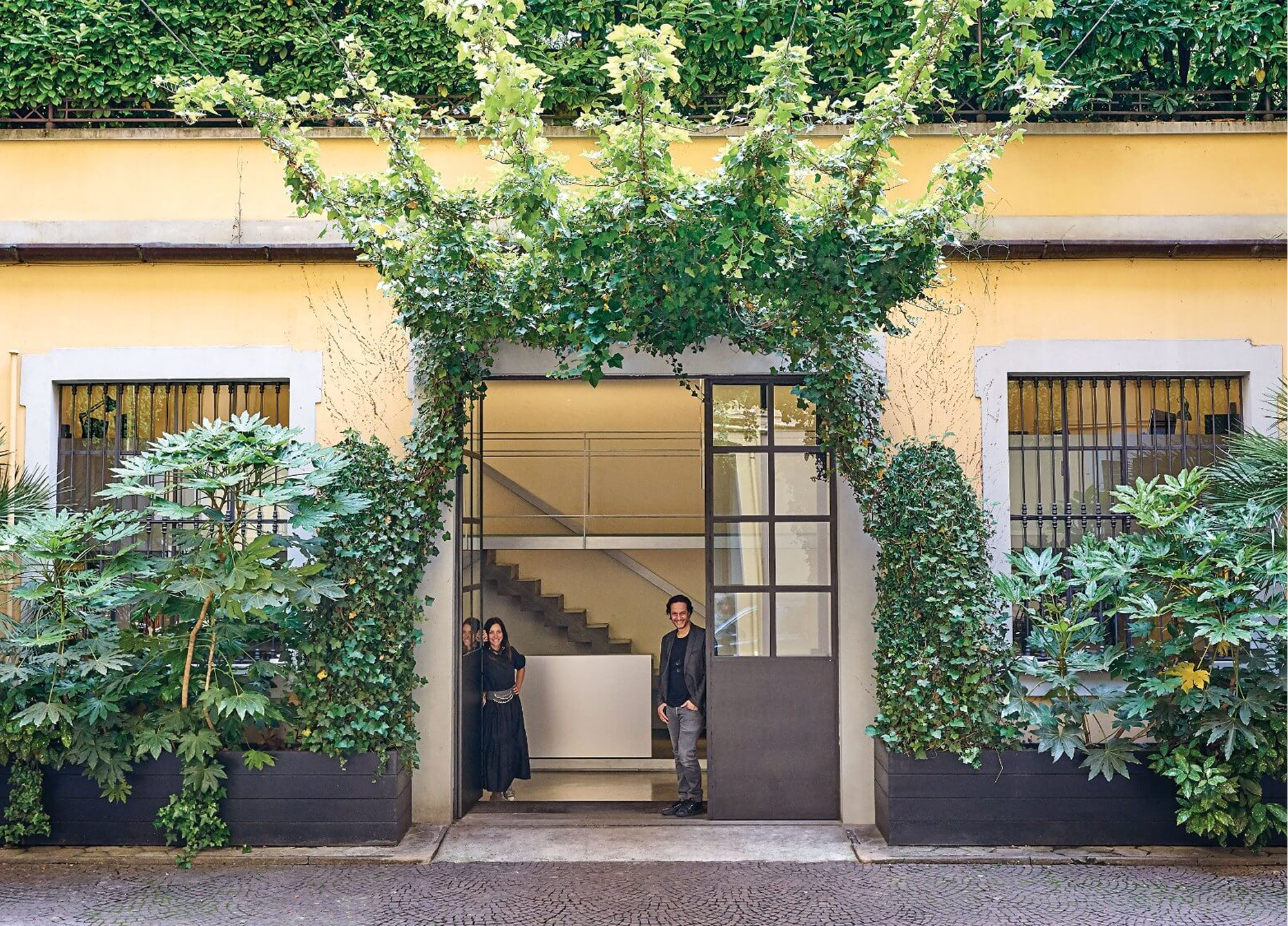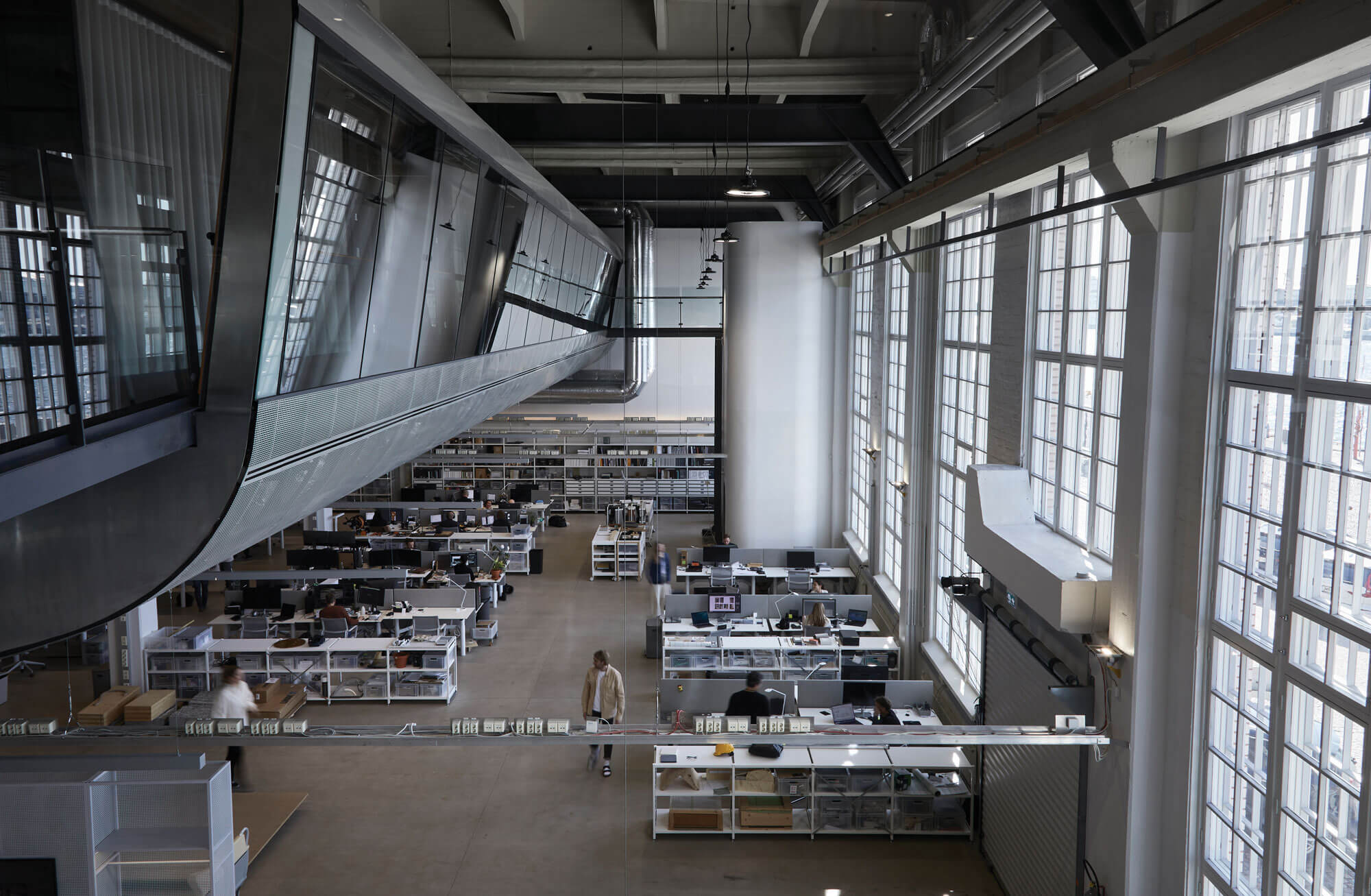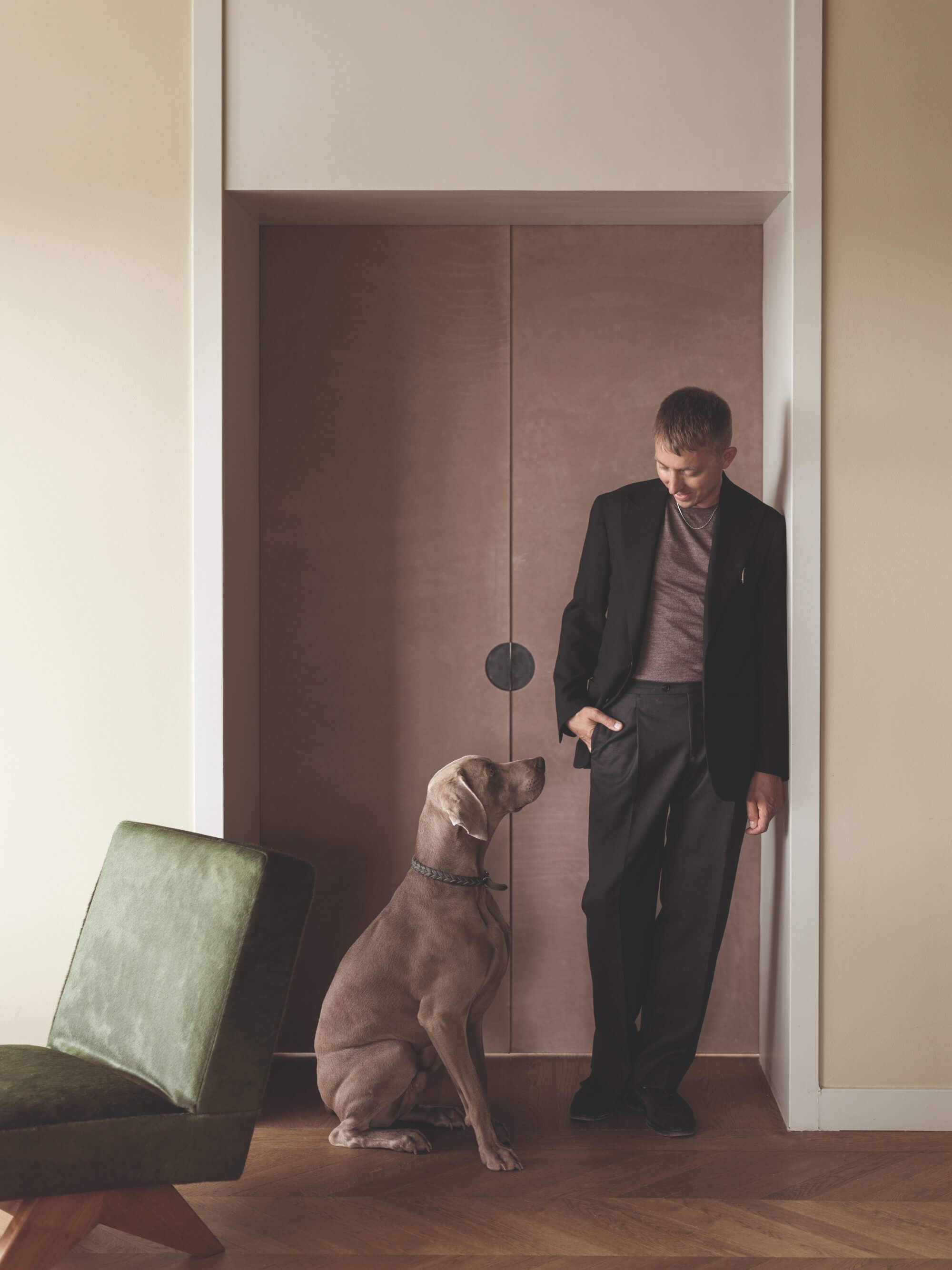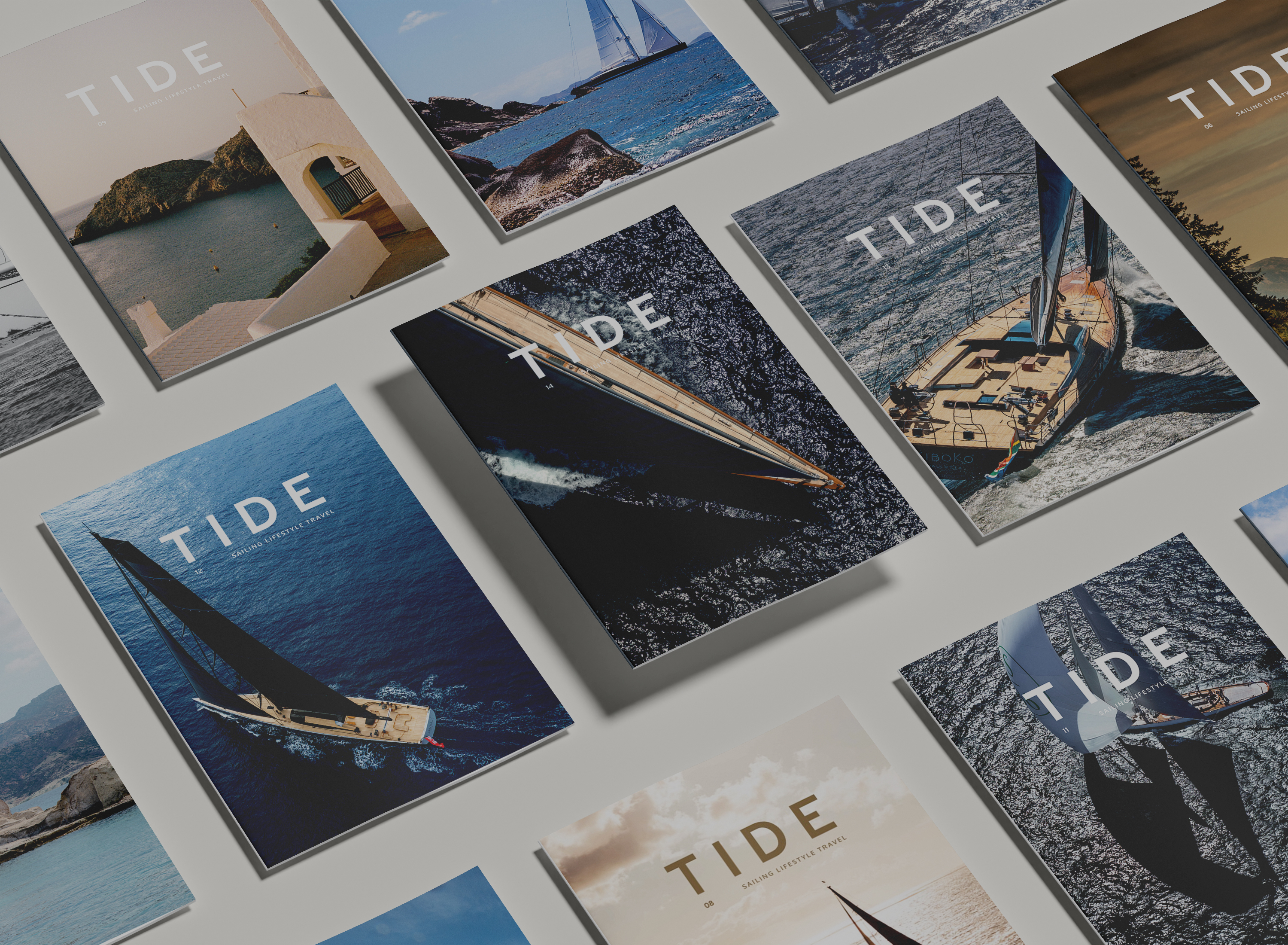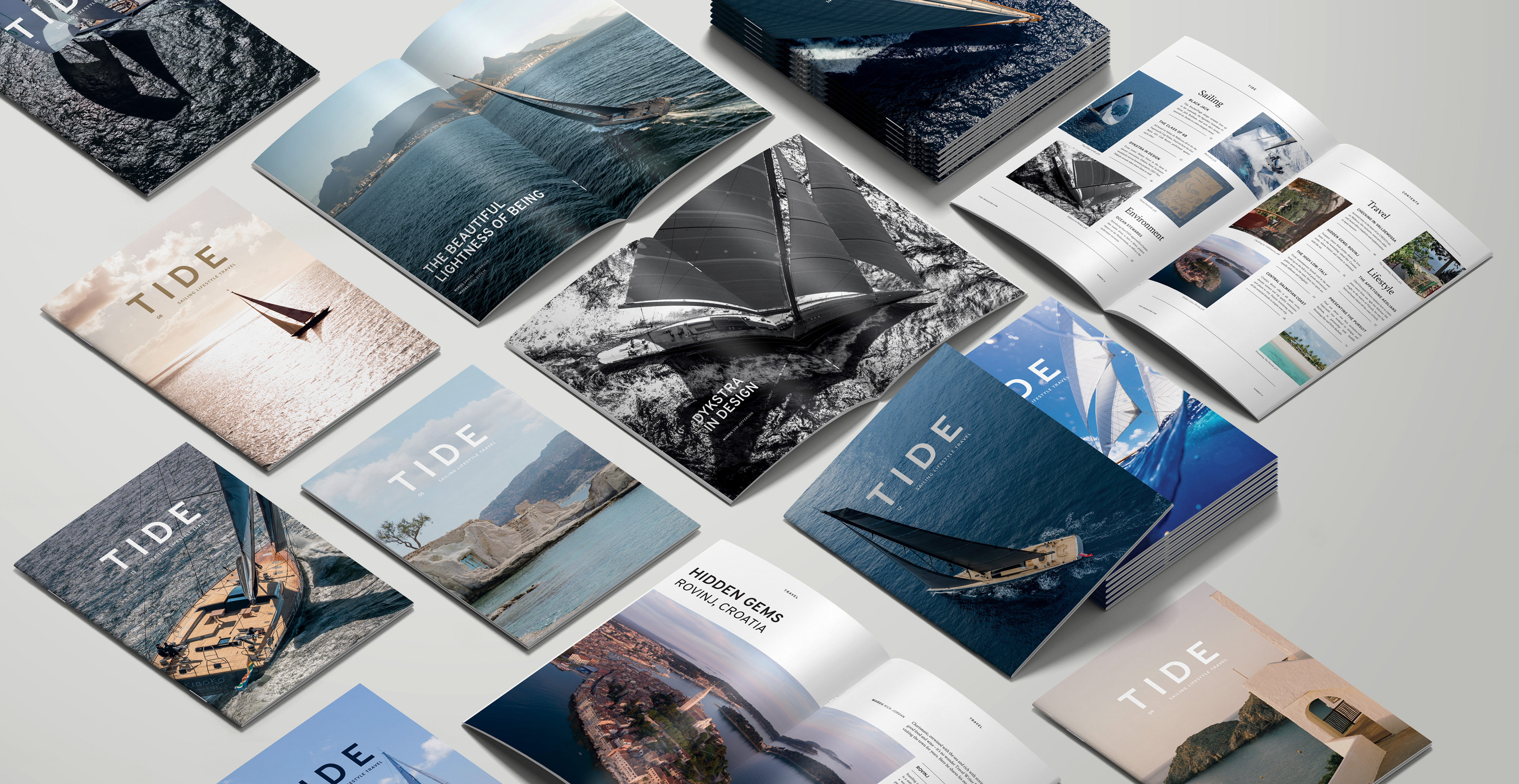It was McKeon’s mother, an artist herself, who first taught him the importance of aesthetics and proportion, something that runs across the blueprint of all design, but plays particular importance in naval architecture. Another takeaway was the importance of how a creation is perceived as a whole, and to this day McKeon’s designs are acclaimed for that magic three: their artistic look, skillful dimensions and clean exterior lines.
The 37-metre (123ft) Aquel II (now named Philkade) was McKeon’s first break into Superyachts. At the time of her build in 1985 she was revolutionary, with her open-plan interior, contemporary profile and clear decks. It was in the design of Aquel II that McKeon, who was then working for Dubois Yachts, created the wraparound window allowing for panoramic views from within the salon. “The concept of the wraparound windows on Aquel II originally came about because the owner said he loved the look of a Riva motorboat from an exterior point of view,” explains McKeon.
“I had always been a fan of Riva designs and had pictures on my wall of them. So, I drew this big wraparound window and the owner loved it.” Using glass to bring the outside in remains a key feature of his highly successful Malcolm McKeon Yacht Design (MMYD) studio launches today.
Technological advancements and materials have changed significantly during McKeon’s 40 years in the business, as has the way studios use glass as part of the structure. “We like to maximise glass panels and minimise structural members wherever possible,” explains McKeon. “Fortunately, classification societies are now approving designers to use glass for structural marine use, so that vast floor- to-ceiling topside windows and three-dimensional bent glass superstructures can be used extensively in yacht construction, which then only require minimal additional support.”
Of course, the sailboat of 2024 is a different beast to Aquell II in more ways than just her looks. “Carbon masts, rigging and composite sails are all pretty standard on performance Superyachts now,” says McKeon. “However, we are also seeing demand for larger sailing yachts where the loads involved are very much bigger, but this size increase does then also increase the loads on the sheets handled by crew. Captive winches and sailing systems on deck have therefore evolved to increase sail handling safety on yachts from as small as 35 metres right up to the larger end of our range at 80 metres-plus.”
Lifting keels are another factor that have moved the needle: the new technology available has dramatically helped the performance of sailing Superyachts. “In the early days, when we designed quite a few yachts with Alloy Yachts, they would be comfortable boats to be on board, but were less performance orientated,” says McKeon. “The yachts designed today are so much more enjoyable to be on, and they are also easier to sail well with fewer people. In terms of responsiveness and acceleration, they are simply a world apart from where we started.”
Having been involved in the design of more than 200 yachts, more than 55 of which have been Superyachts, McKeon remains passionate about all of the vessels he and his team have helped to bring into being but says that it is usually the latest yacht that stands out for him. In this case, the most recent project from MMYD is the 59.7-metre (196ft) Royal Huisman-built Sarissa, which received extensive recognition at the Boat International Design & Innovation Awards at the beginning of the year, taking home five Neptune trophies, including Best Naval Architecture and Best Exterior Design. “She was a rewarding project for MMYD, and we’re very proud of her, ” says McKeon. “The yacht’s dramatic profile embodies the client’s brief in every way, from the low, sleek superstructure and the large square top mainsail to the open-plan cockpit and striking panels of glass,” says McKeon. “So much on Sarissa was pushed to the next level by the client, and the outcome is an incredibly powerful boat with exceptional performance, blistering acceleration and the feel on the helm of a boat half her size. The client also [wanted] to be sailing after lunch within minutes [as well as] minimum setup to get going, so he really tested us, and we enjoyed the challenge.”
Prior to Sarissa, MMYD was involved in the design of the 33.5-metre (100ft) Zemi, as featured in TIDE issue 07. “Zemi was the fourth yacht that we designed in the mid 30-metre range, and although in many ways she is an evolution of the previous designs, she is also an advancement, with really striking exterior lines,” says McKeon. “We also used a lot of sculptural teak in the cockpit and coamings to create a soft feel which is something new for MMYD.” The 33-metre (108ft) Missy (now named Pattoo) also holds a special place in McKeon’s heart. “It was the first yacht to be launched under my own brand after I left Dubois.”
These landmark yachts are seemingly always steered by within by incredibly trusting clients who place themselves firmly into MMYD’s hands. But how exactly does the process work from the client’s point of view? “First and foremost, every design is fully custom and bespoke and driven by the client whom we develop the first concept with,” explains McKeon. “The MMYD studio is driven by its dedication to client-centred design. Whether their preference is for a yacht with classically inspired lines or more avant-garde attributes, each project is a continual development and refinement of hull forms, improved efficiency, hydrodynamics and weight savings.”
The sailing yacht market certainly seems to be enjoying something of a resurgence in popularity, thanks in part to a new generation of clients who recognise the boats’ environmental advantage and [that they] are instrumental in developing new technologies. “We’re delighted there has been a shift towards sailing yachts due to their unmatched green credentials,” says McKeon. As a result of this demand, MMYD is introducing a number of fuel-efficient ideas to reduce emissions and running costs and is continuing to research new techniques all the time. “As naval architects, the simplest and most effective method to reduce emissions is to streamline the hulls and reduce drag,” says McKeon. “We therefore put emphasis on less is more. Create more compact, efficient areas. Go longer rather than wider and higher.”
Complementing these new technologies in naval architecture, MMYD has also moved towards innovative designs with brighter and more open-plan interiors and outdoor spaces dedicated to living by the water’s edge. The more conventional compartmentalised layouts are no longer de rigueur, while clients are also focused on outdoor areas so that they can have a more intimate experience with the sea. “Sarissa is a great example of how we’ve tried to innovate in the useability side of things – the aft section opens to reveal a large beach club, which hosts a bar, seating area and sauna,” says McKeon. “The carbon beach club door is really an engineering marvel, literally doubling the size of the platform to an impressive 20m².”
McKeon has also witnessed an increase in owners coming from the motor yacht market. “The majority of these clients are wanting the same luxuries as they would find on a motor yacht and in order to achieve these, super-sized sailing yachts are now becoming a popular choice.” Indeed, MMYD recognised this trend, saw that there may even be an increased interest in large catamarans and therefore developed its BlackCat range and more recently the MM75 design. “Large catamarans are a very good crossover option for those owners looking to switch from motor to sail,” says McKeon, explaining that the advantages of a catamaran hull configuration are multiple. “The catamaran form affords massive space on the main deck with great flexibility – the perfect entertainment platform. The shallow draft opens up a wide range of anchorage and harbour options, while the low roll and pitch ensure stability and comfortable nights.” However, there are some hurdles to overcome for the large catamarans, such as mooring restrictions due to their larger beams, and engineering challenges.
And what about the future for the MMYD? The studio has two designs presently under construction – a 56-metre ketch-rigged sailing yacht and an 80-metre motor yacht. Its collaboration with Windy Boats continues, with the launch of the fifth Windy SLR60 a testament to the MMYD-designed chase boat’s success and popularity. “We’re very happy with the amount of work we have on currently,” says McKeon. “We also have several new and exciting designs on the drawing board and in the developmental stages for clients, ranging in size from 33 metres to 85 metres. The team at MMYD has an enormous breadth of experience and we enjoy the variety of commissions we receive.”
And so it seems the future looks very bright indeed, for both the award-winning MMYD studio – and the sailing yacht market itself.
